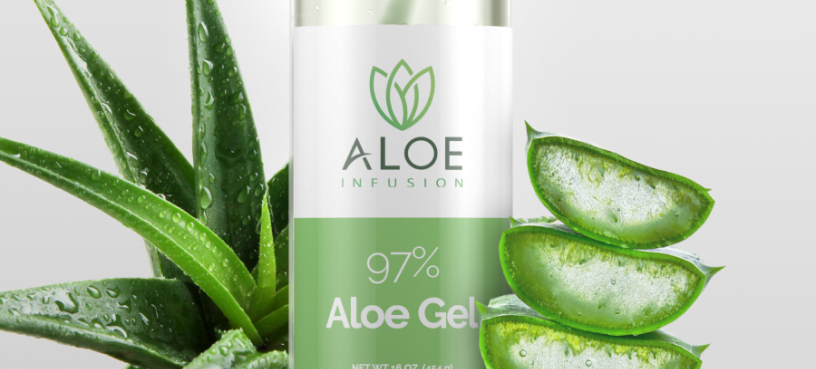It’s getting colder, and the change in the weather means a change in your skin, too. Most experience peeling, cracking, chapping, irritation, and dryness in the cooler months. The temperature drop is a drop for your skin - what is there to do?
A new season means a new routine. It’s time to meet your dry skins' match - Aloe Vera Gel.
Aloe vera isn’t just for sunburns in the summer. Keep reading to find out how to prevent and repair your skin this winter with aloe vera.
Why Aloe Vera?

Aloe vera contains over 75 active compounds. That means aloe has goodies like vitamins, minerals, enzymes, salicylic acids, saponins, sugars, lignin, and amino acids [1]. These natural compounds aren’t only scrumptious food for your parched dry skin, but they also give aloe vera its unique abilities, like wound healing, reducing inflammation, detoxification, helping with digestion, supporting immunity, soothing an itchy scalp, and much more [1].
If you experience breakouts, dryness, irritation, or facial sensitivities in the winter, aloe vera gel is your skin’s new lifeline. Because of the anti-inflammatory nature of aloe vera gel, it can be helpful in soothing damaged skin that needs a little TLC [2].
So, when the summer’s humidity and moisture are lost to the winter’s cold, dry air, and your skin suffers from intense hydration loss that disrupts its natural barrier, you will definitely want to look into a little TLC [3].
What is Aloe Vera Gel?

Aloe vera gel is the clear gel that is extracted from the aloe vera plant’s leaves. This gel is where all the goodness hides. Aloe vera gel is made up of mostly water, plus all those amino acids, vitamins, enzymes and other unique components we mentioned above [1]. This special gel is what is commonly used in medicinal, cosmetic, and various other kinds of products for its many benefits.
And here’s some more great news - Aloe Infusion’s Aloe Vera Gel’s main ingredient is cold-pressed aloe vera.
Your dry skin needs something that is both soothing and hydrating and promotes quick healing. That’s where Aloe Vera Gel comes into play:
IT’S MADE WITH ORGANIC ALOE VERA
Our formula starts with Organic Aloe Vera, followed by simple necessary ingredients and no unnecessary additives.
OUR FORMULA IS NON-STICKY
Our formula is made without Xanthan or any other harsh ingredients that can potentially leave behind an unpleasant residue on your skin.
OUR GEL IS SAFE FOR SENSITIVE SKIN
Our gel is made in the USA with no artificial fragrances, coloring, or parabens. We take pride in our ingredients and view them as a breakthrough in natural skincare.
How can I use Aloe Vera Gel in the winter?
The aloe vera plant is as versatile as it is beneficial. You can use aloe vera gel as a hair mask - its ultra-nourishing and all-natural compounds can soothe dry or itchy scalps [4]. You can also use aloe vera gel for razor burns, treating minor wounds, or even as a shaving gel. With its anti-inflammatory properties combined with lots of helpful enzymes, it’s no wonder aloe vera gel is coveted for its versatility [2].
So, when you feel your skin starting to tighten and get dry this winter, the first thing you should do is hydrate and coat your skin with essential oils, serums, cold-pressed aloe vera gels, and creams designed to restore your skin’s natural moisture balance [2, 3].
This winter, we recommend adding our Aloe Vera Gel to your morning and/or nighttime skincare routine(s):
- Before you go to sleep, make sure to remove your makeup, double cleanse, and then apply your favorite products. You can replace your moisturizer with Aloe Vera Gel.
- After getting out of the shower, leave a bit of water on your face. Apply some Aloe Vera Gel on top to lock in the moisture and retain hydration that your skin can soak up.
- In the morning before heading out for work, you can further repair your damaged skin throughout the day by applying some Aloe Vera Gel as a daytime moisturizer.
What are some other ways I can prevent dry skin when it gets colder?

- Do your very best to stay hydrated. Fill your water bottles and make sure to drink water throughout the day. Your skin will thank you.
- Avoid hot showers and baths.
- Apply a thick moisturizer or cream within three minutes of exiting the shower or bath.
- Get ready and prep. Make yourself a “dry skin routine” before the winter chill sets in.
- Try at-home aloe vera facials with facial gels or hydration masks.
- Consume water-rich fruits and vegetables to pamper your skin. Fruits like pomegranate, banana, watermelon, papaya, kiwi, oranges, and apples are great choices.
Ready to try dry-skin-fighting products that will restore your skin this winter? Click here!
What are some ways you combat dry skin in the cooler months? Let us know! The Aloe Infusion community always loves hearing from you.
We’ve gone ahead and enclosed a 20% off Coupon below for you to use in the store - remember, you DESERVE to have naturally flawless skin! Click here to start shopping!
Resources:
- Shah SS. Aloe Vera: The Herbal Panacea in Dentistry. Int J Adv Health Sci 2014; 1(1): 25-27, http://citeseerx.ist.psu.edu/viewdoc/download?doi=10.1.1.683.7601&rep=rep1&type=pdf.
- Cherney, K. (2019, June 7). Aloe vera for the face: 10 benefits, side effects, and more. Healthline. Retrieved from https://www.healthline.com/health/beauty-skin-care/aloe-vera-for-face#what-to-look-for.
- What to do about dry skin in winter. Harvard Health. (2011, February 1). Retrieved from https://www.health.harvard.edu/womens-health/what-to-do-about-dry-skin-in-winter.
- Brennan, MD, D. (2021, October 25). Aloe vera: How it can benefit your hair. WebMD. Retrieved from https://www.webmd.com/beauty/benefits-of-aloe-vera-for-your-hair#:~:text=Aloe%20vera%20has%20many%20active,Controls%20greasy%20hair.



Comments